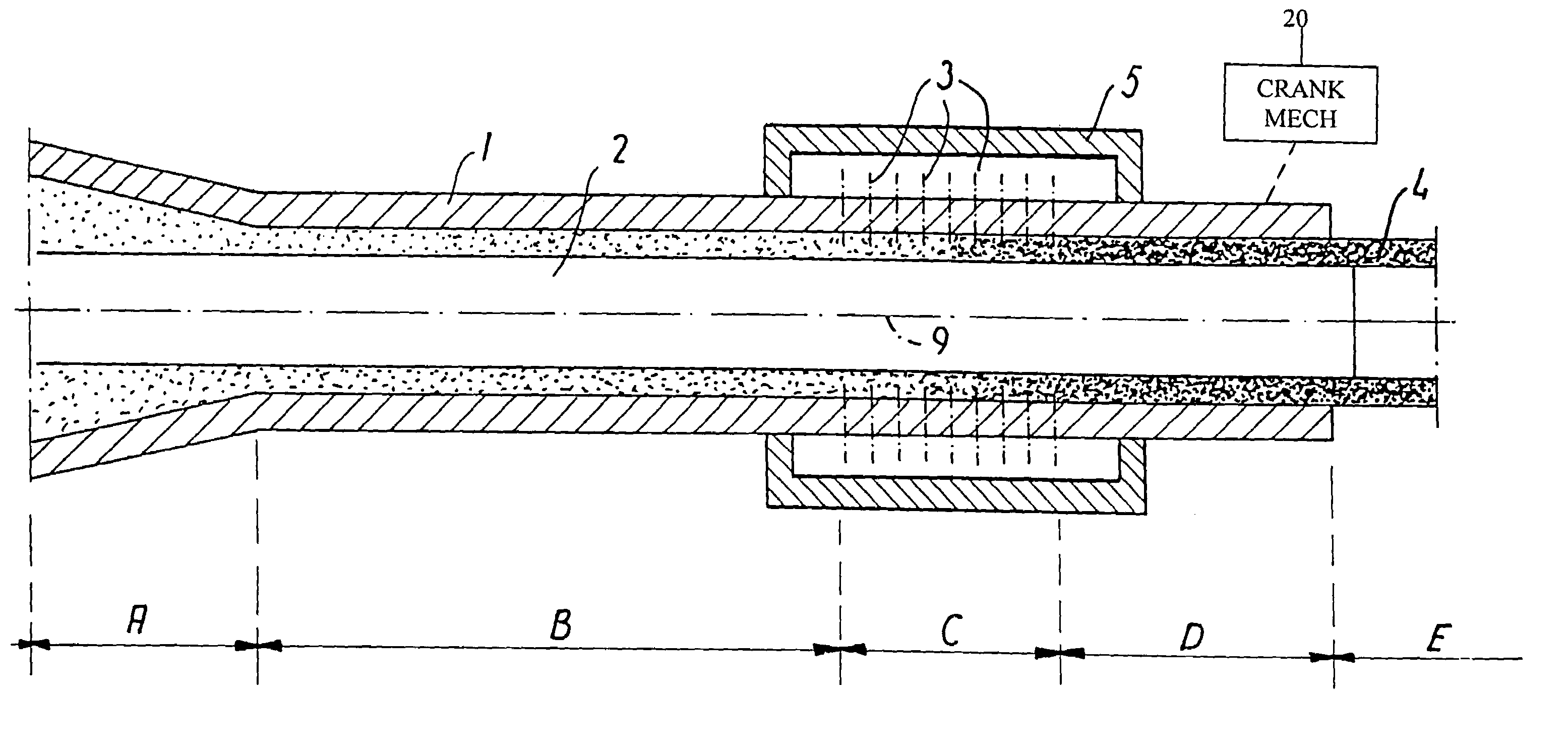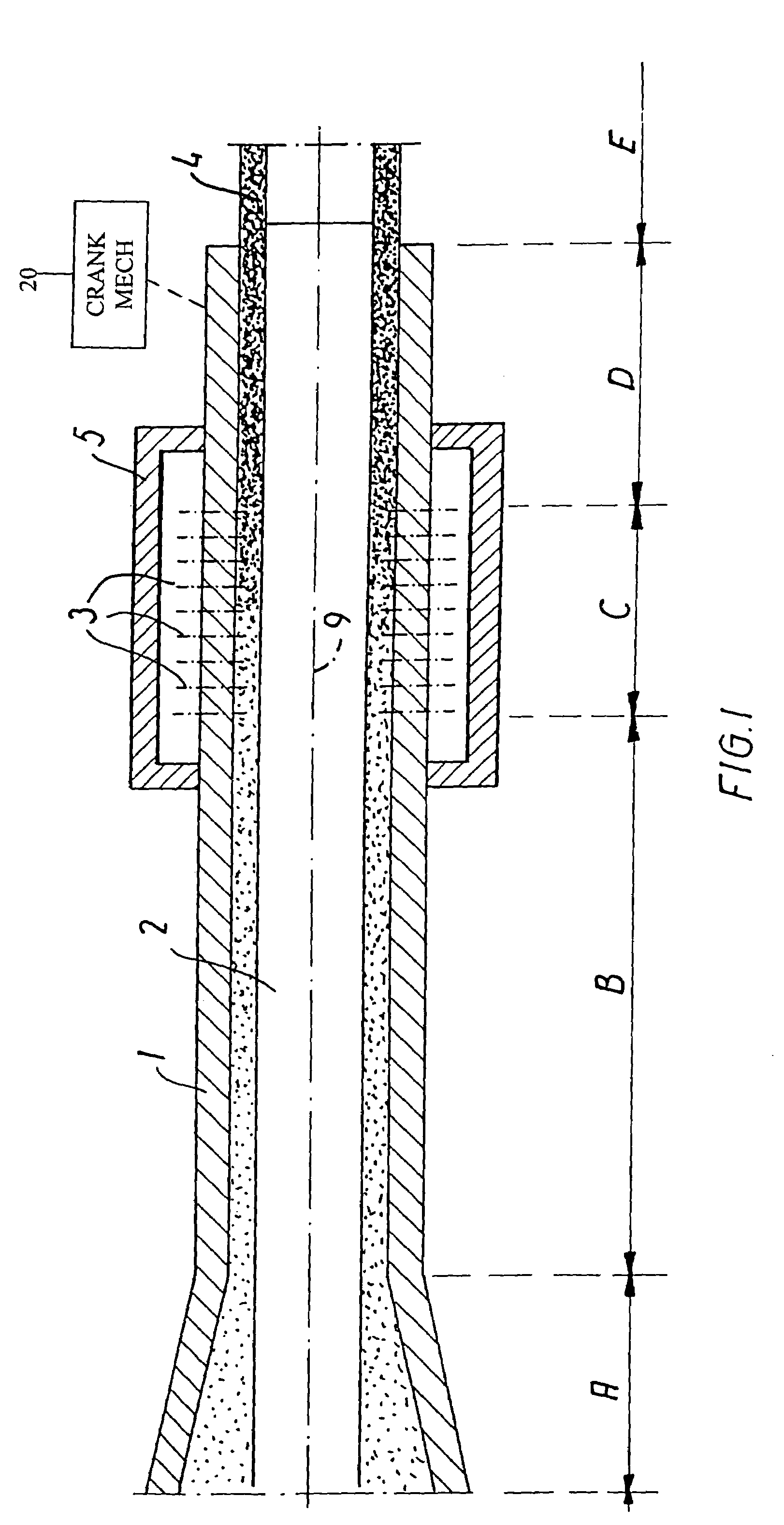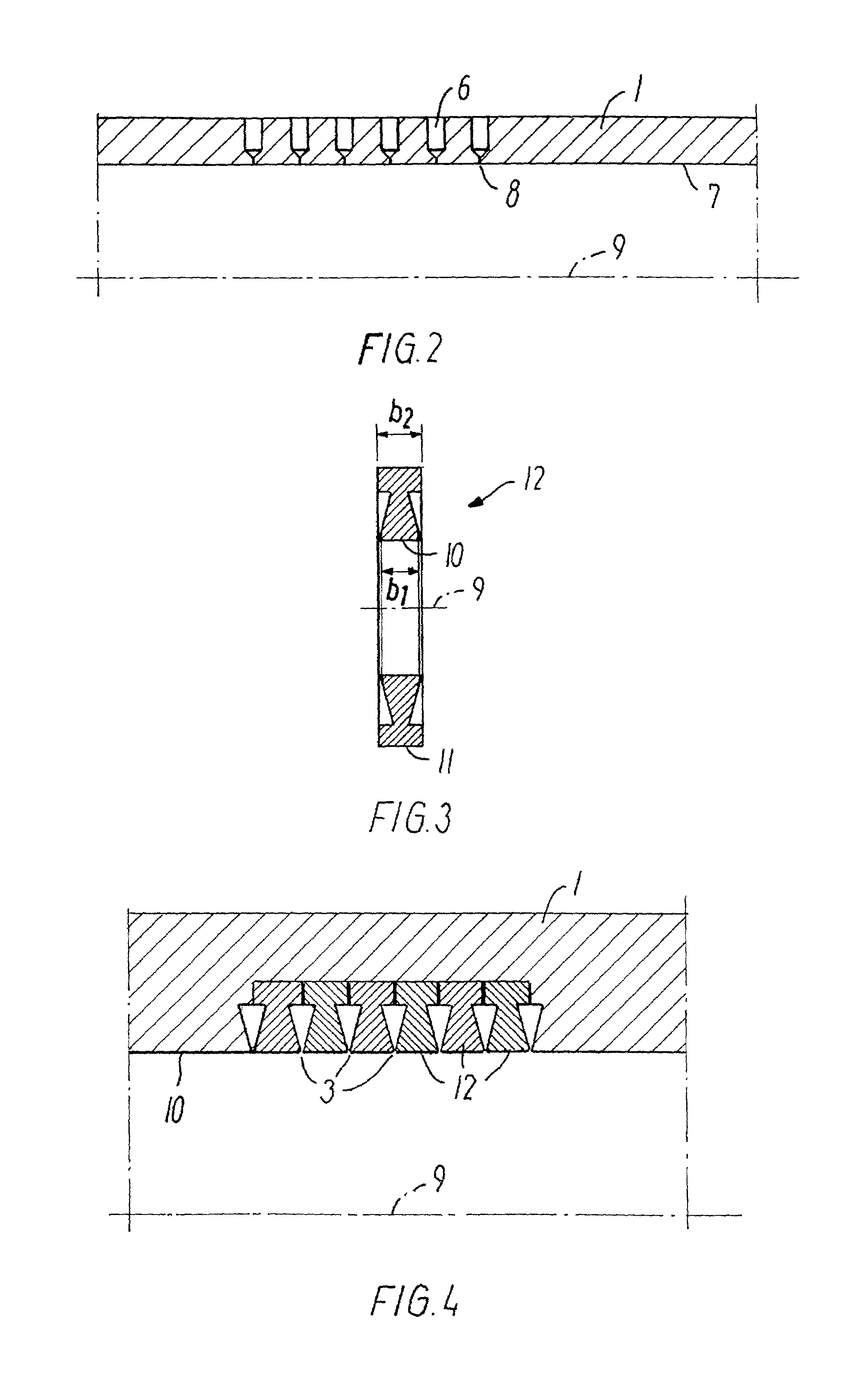Extruder for producing bodies of consolidated particulate material
a technology of consolidated particulate material and extruder, which is applied in the field of extruder, can solve the problems of uncontrollable movement of dewatered and untreated materials, and the end product does not become fully homogeneous, and achieves the effects of collapsing or falling apart, and reducing the risk of deformation
- Summary
- Abstract
- Description
- Claims
- Application Information
AI Technical Summary
Benefits of technology
Problems solved by technology
Method used
Image
Examples
Embodiment Construction
[0029]FIG. 1 shows the parts of an extruder essential to the invention, specially, designed for producing tubular products, it being obvious that an extruder based on the same principles could also be used for extruding products with other cross-sectional shapes, such as flat or corrugated sheets or profiled stock of various cross-sectional shapes.
[0030]The parts of the extruder shown comprise an outer part 1, an inner part 2, a plurality of nozzles or slits 3 for draining-off liquid, as well as a pressure-regulating chamber 5.
[0031]As shown, the extruder is divided into four consecutive sections, i.e.[0032]an inlet section A for the supply of flowable suspension to be compacted, and[0033]a flow section B, in which the suspension having been supplied flows towards[0034]a drainage and consolidation section C leading into[0035]a solid-friction section D.
[0036]Further, FIG. 1 shows a further section, designated the exit section E, in which the extruded product leaves the extruder.
[0037...
PUM
| Property | Measurement | Unit |
|---|---|---|
| pressure | aaaaa | aaaaa |
| width | aaaaa | aaaaa |
| atmospheric pressure | aaaaa | aaaaa |
Abstract
Description
Claims
Application Information
 Login to View More
Login to View More - R&D
- Intellectual Property
- Life Sciences
- Materials
- Tech Scout
- Unparalleled Data Quality
- Higher Quality Content
- 60% Fewer Hallucinations
Browse by: Latest US Patents, China's latest patents, Technical Efficacy Thesaurus, Application Domain, Technology Topic, Popular Technical Reports.
© 2025 PatSnap. All rights reserved.Legal|Privacy policy|Modern Slavery Act Transparency Statement|Sitemap|About US| Contact US: help@patsnap.com



